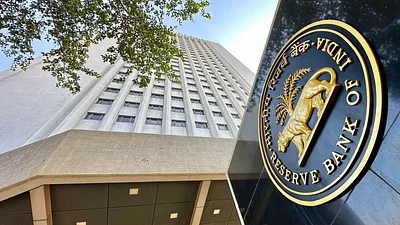The globally elevated interest rates are set to buoy the returns from the Reserve Bank’s foreign investments to the tune of $6-8 billion this fiscal, which will help the monetary authority pay higher dividend to the government and also buffer up the forex reserves a la the FY21 fashion, says an overseas brokerage report. Traditionally the RBI parks more than 70% of the assets overseas, mostly in the U.S. treasury bill, where the interest rates have been on northward ho for a long now. Similar is the case in the EU and elsewhere along with the domestic rates.
For the week to July 7, the forex reserves rose by $1.23 billion to $596.3 billion, but still vastly down from the $645 billion peak in October 2021. The reserves have been declining as RBI deploys the kitty to defend the rupee amid pressures caused majorly by global developments. Of the total, the major component of foreign currency assets increased by $989 million to $528.97 billion.
The RBI returns have typically been higher on domestic assets due to yield differentials. But now both foreign as well as domestic assets should now be generating higher returns, with the gap between domestic and foreign interest rates shrinking, says Rahul Bajoria of Barclays Securities.
In FY20 the RBI balance sheet was Rs 53,34,792 crore or 5.50% of current revaluation balance and made a provisioning of Rs 73,615 crore and yet transferred Rs 57,128 crore to the government in dividend/surplus transfer. The numbers stood at Rs 57,07,669 crore and 5.50% and Rs 20,710 crore and Rs 99,122 crore respectively in FY21 and at Rs 61,90,303 crore5.50 per cent and Rs 1,14,667 crore and Rs 30,307 crore respectively in FY22 and at Rs 63,44,756 crore 6 per cent, Rs 1,30,876 crore and Rs 87,416 crore in FY23.
He further says additionally, the current account position should also see a boost through the primary income channel. Indeed, net primary income from reserve assets nearly doubled from Q3 of 2022 to Q1 of 2023 and since 1 bps increase in returns adds $3-4 billion in income, the incremental increase can be to the tune of $6-8 billion for FY24, which should put a lid on the widening in the primary income deficit.
Another enabler is the health of the domestic banking sector which has improved significantly since the asset quality review taking the gross NPA ratio to 3.9% in FY23, a 10-year low, and down from a peak of 11.2 per cent in FY18. Another is the FY23 contingency risk buffer of the RBI at 6 per cent is much higher compared with the GNPA ratio, which implies it can be reduced without endangering financial system safety.
On the back of improving external conditions, the RBI’s balance sheet expanded to the tune of 8% in the past eight months, led by revaluation gains as the central bank bought back dollars. Most of this gain has come from foreign assets, with domestic assets contracting over the same period.
And the RBI balance sheet is expected to grow by 1 per cent in FY24 and by 7% in FY25, he said, adding however the monetary authority will have to keep the dollar-rupee level above 78.9 by end of FY24 to maintain both the contingency and revaluation buffer requirements under the prevailing economic capital framework, based on the size of the balance sheet. And in a similar fashion, the currency rate will have to be maintained above 80.6 by the end of FY25. The ECF is up for its maiden review in FY25 after its introduction in FY18 as proposed by the Bimal Jalan committee, which had set the RBI’s contingency buffer norms at 5.5-6.5%.
Source :- Bloomberg Quint India (Dated :- 18th July, 2023)
Link :- How the RBI’s higher foreign investment returns will help the economy (bqprime.com)




